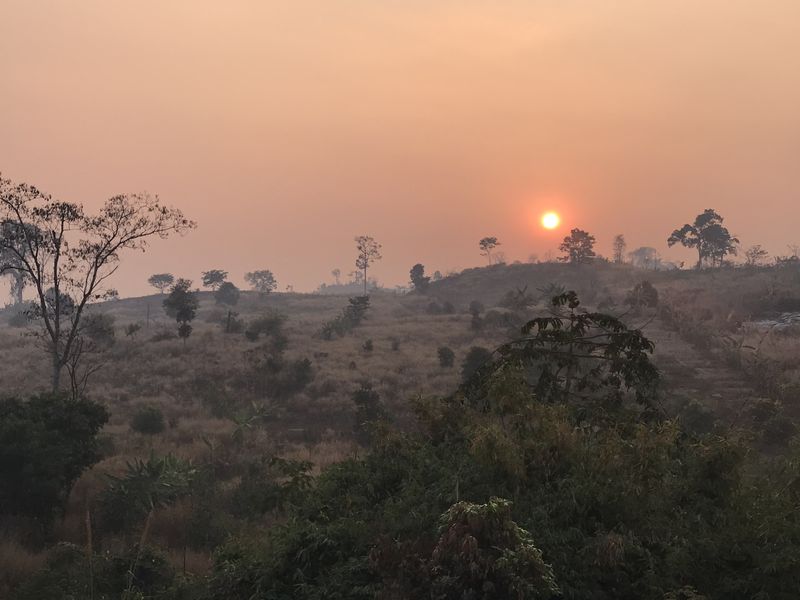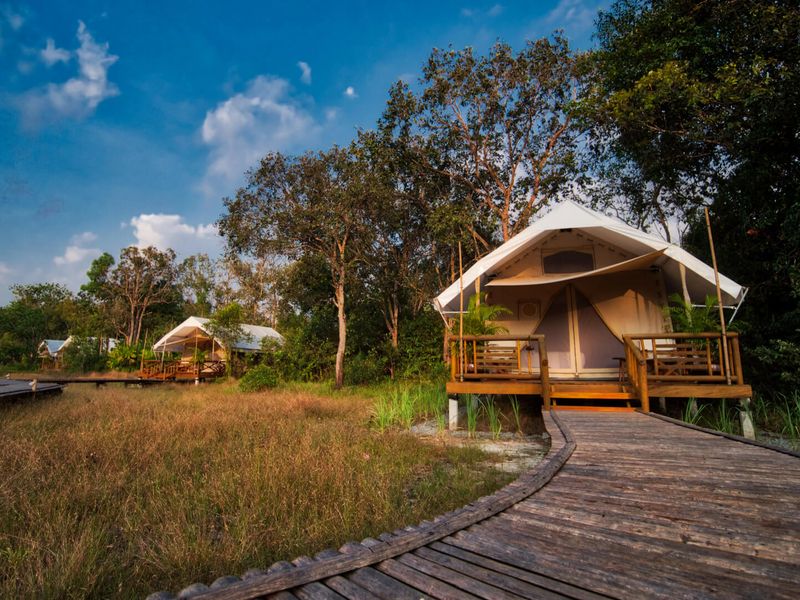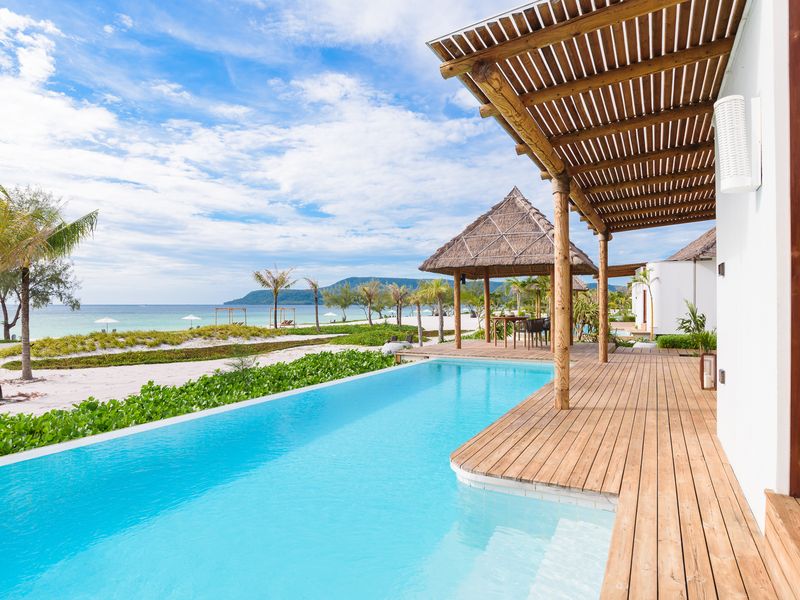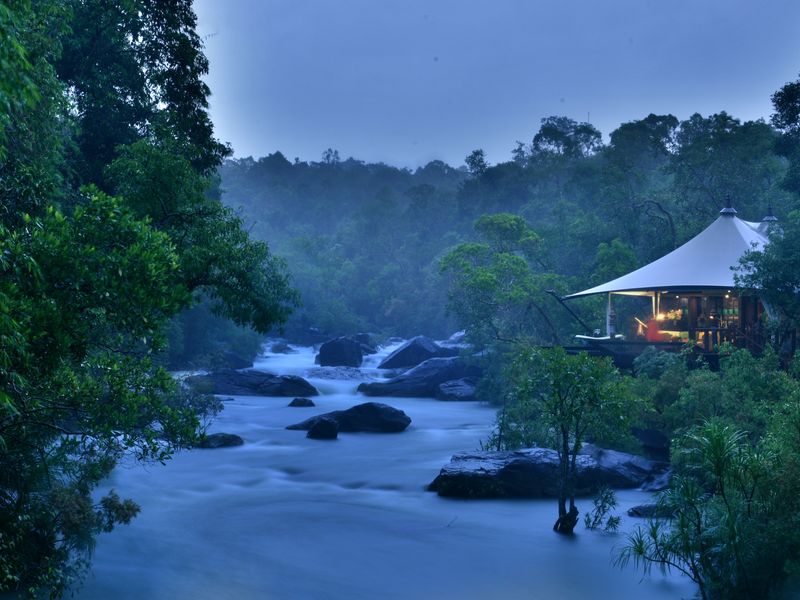The Selective Edit
Be inspired by Cambodia
Explore a hand-picked selection of our favourite journeys, articles, experiences and special places to stay in Cambodia. Not one to be read in a rush, it’s time to grab a cuppa, and see where it takes you…
ត្រូវបានបំផុសគំនិត
On the road: planning a cycling holiday in Cambodia
From irresistible trails for keen riders to gentler paths for beginners, cycling in Cambodia allows for a fresh perspective when exploring this fascinating south-east asian country.
Much of Cambodia’s terrain is very level, making for ideal cycling across a variety of ability levels with varied landscapes, spanning from the Angkor Temples, to riding along the Mekong, exploring remote rural villages and finding yourself in a flooded forest…
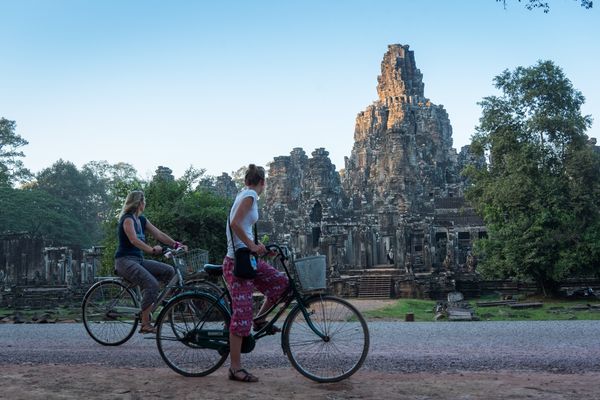
Community ecotourism in Cambodia's Cardamom rainforest
Disappear into the Cardamom Mountains rainforest for true time out in an extraordinary array of ethical places, from ultra-luxe eco at Shinta Mani Wild, to hands-on homestays in forest communities. Support rare wildlife and local people while you stretch your legs and breathe the clean air in this lush corner of Cambodia.
It's no secret that we're in love with the whole of Cambodia, but this corner of it is especially gorgeous. Picture a craggy mountain landscape covered in broad swathes of rainforest and tangled woodland, snaked with broad gentle rivers and swirling rapids. It's the sort of place where you spend the morning following an ex-poacher through the jungle to a hidden waterfall with its own natural pool, where you can indulge in a spot of wild swimming before a picnic on the rocks. In the afternoon, perhaps you'll meet the locals in a forest village, or spend some otherworldly time in the tropical butterfly sanctuary…
STAY
EXPLORE
Alternative Angkor Temples
Indulge your inner Lara Croft by roaming Cambodia's lesser known Angkorian ruins, hidden in the jungle, off the beaten path and delightfully free from crowds, but surprisingly easy to reach from Siem Reap.
There's nothing quite so atmospheric as an ancient stone temple with nobody in it but you and one suitably wizened monk who's there to light the incense. We're half tempted to keep quiet about these hidden gems, but we never cease to be amazed by how few people we see there, despite being reasonably close to the beaten path and Angkor Wat.
There is something to be said for finding your own way between giant fallen stones and those huge roots of towering fig trees that slowly but surely reclaim Angkor's ancient landscape. It can feel like magic to emerge from behind a pile of rocks and find yourself face to face with intricate stone carvings draped in lianas, monumental step temples sliding into the undergrowth, and curious subterranean corridors surely designed for 11th century monks to pace from shrine to sanctuary in the shade.
Taste Cambodia
Step aside Thai and Vietnamese, the little-known Cambodian cuisine holds a place amongst these culinary big hitters

LONG READ
The transformation of Phnom Penh
Phnom Penh, Cambodia’s capital, has doubled its population in the last two decades. The city has transformed: modern towers are thrusting skywards, and investment pours in from across Asia and the corporate world. The city’s astonishing growth shows no sign of slowing, so we asked the PP residents in our Cambodia office to tell us what it’s like on the ground.
Twenty years ago, Phnom Penh was home to a million people, most of whom got around by bike or motorbike, on poor roads between low old houses left tattered by the war. Electricity was patchy, and the lack of restaurants wasn’t really a problem, because most people couldn’t afford to eat out.
The cost of living was low, but so were the incomes - it’s all relative, after all. All of Cambodia’s further education was focused here, and entirely run by the government. Few people spoke English. There were hardly any Western bars or high end hotels in town, and tourists who wanted to see the city would do so by cyclo (rickshaw), or maybe motorbike taxi.
By around 2008, the population was only up to 1.3 million (matching the national average population growth), but the city was hinting at a boom. A few tall buildings had materialized, and a number of banks, private universities and modern supermarkets had opened for business. The roads were being improved, and cars were rolling out, prompting a noticeable drop in the number of cyclos. Things were getting a bit more expensive, but people were starting to build new houses, learn English, and go out to the restaurants that were appearing across town…
